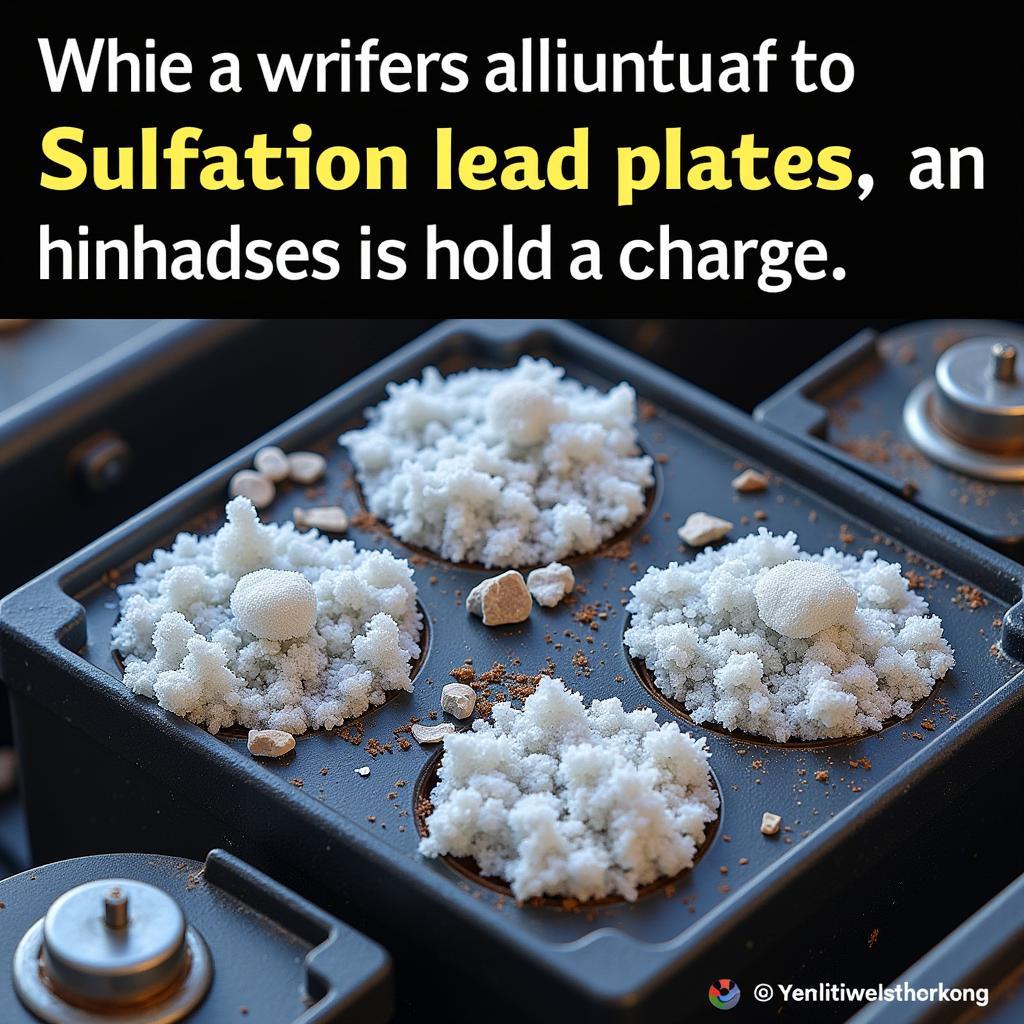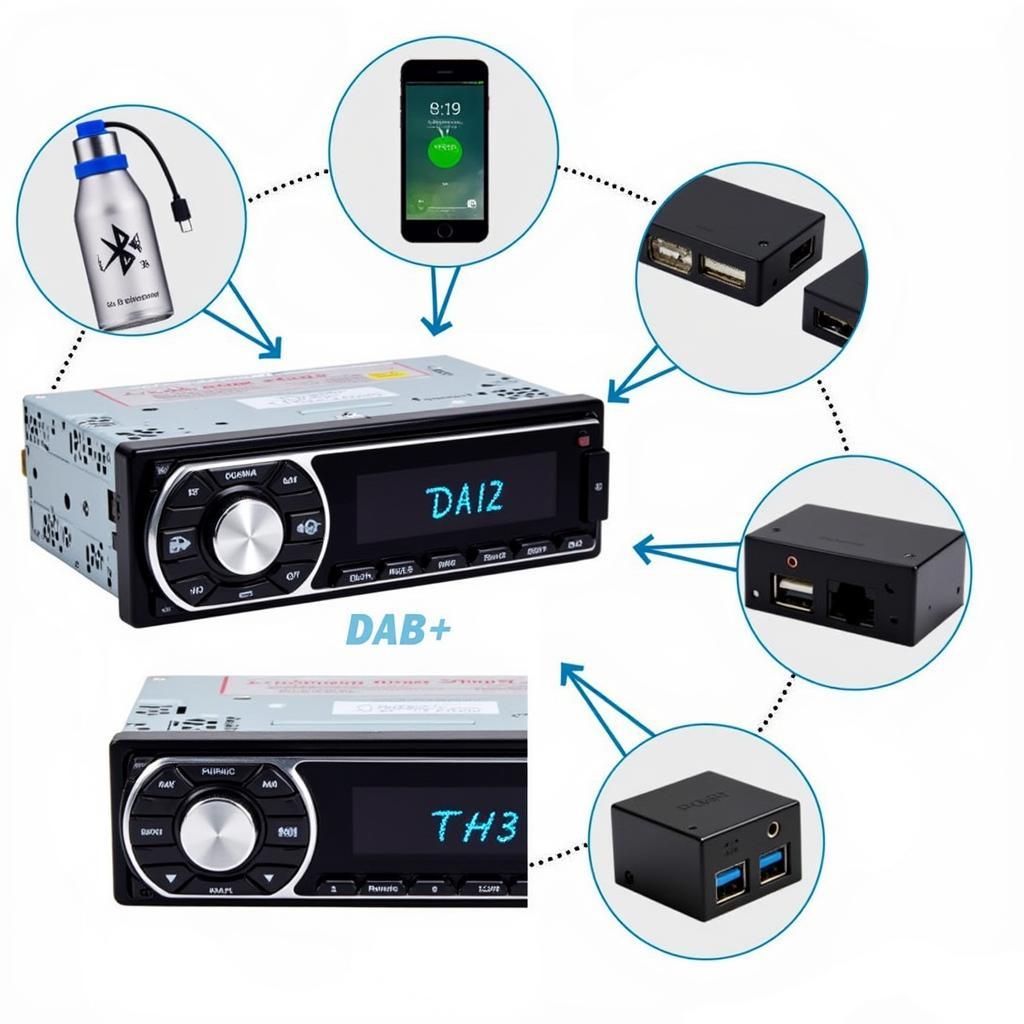That tiny yellow light on your dashboard, illuminated with the ominous words “brake pad warning,” can send a shiver down any driver’s spine. It’s a gentle reminder from your car, whispering, “Hey, it’s time to pay some attention to my brakes!” While it might seem daunting, understanding what this warning means and how to address it can save you headaches (and brake pads) down the road.
This comprehensive guide will walk you through the intricacies of mini brake pad warnings, empowering you to confidently tackle this common car issue. We’ll explore the warning system, troubleshooting steps, and address frequently asked questions. Let’s dive in!
Understanding Your Car’s Braking System and Warning Light
Before we delve into the warning itself, let’s take a quick look under the hood, figuratively speaking, to understand how your car’s braking system operates.
Modern vehicles predominantly use disc brakes, consisting of brake pads housed in calipers that clamp down on rotors attached to your wheels. Each time you brake, these pads create friction against the rotors, bringing your car to a halt.
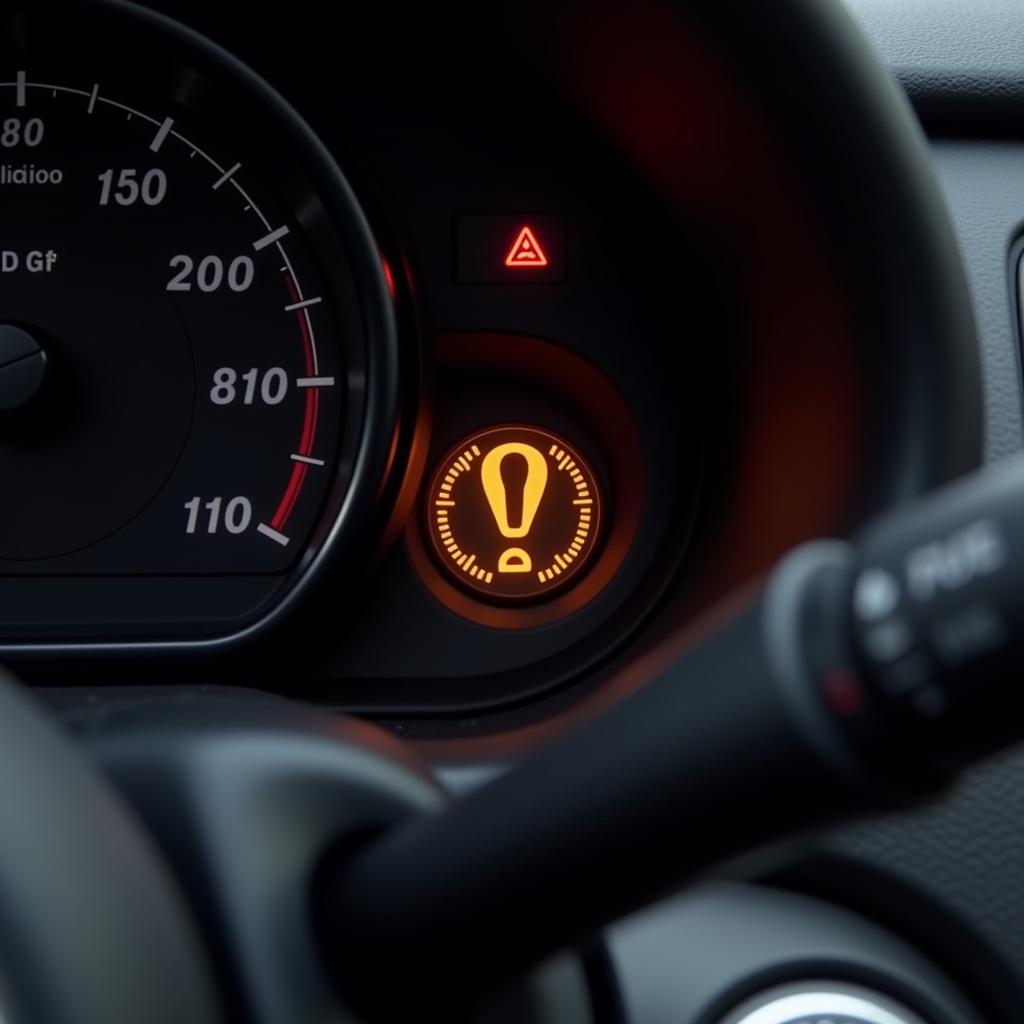 Mini Brake Pad Warning Light On Dashboard
Mini Brake Pad Warning Light On Dashboard
Over time, brake pads wear down due to this constant friction. To prevent driving with dangerously thin pads, your car is equipped with a wear indicator. This small metal tab makes contact with the rotor when the pad reaches a critical wear point, triggering the warning light on your dashboard.
What Does a Mini Brake Pads Warning Mean?
Simply put, a mini brake pads warning means it’s time for a brake inspection. While it often signals worn-out brake pads, other culprits could be at play:
- Worn Brake Pads: This is the most common reason. Worn pads compromise your braking power, increasing stopping distances.
- Worn Brake Pad Sensor: Sometimes, the sensor itself can malfunction or wear out, triggering a false warning.
- Low Brake Fluid: Brake fluid is essential for transmitting force to the brakes. A leak or low fluid level can trigger the warning.
- Other Brake System Issues: Problems with the brake lines, calipers, or rotors could also lead to a warning light.
Troubleshooting Your Mini Brake Pad Warning
Ignoring a brake warning light can lead to costly repairs and even dangerous driving conditions. Here’s a step-by-step guide to help you troubleshoot the issue:
- Check Your Brake Fluid Level: Locate the brake fluid reservoir under the hood (consult your owner’s manual if unsure) and check the fluid level. If it’s low, adding more fluid might temporarily solve the issue, but you’ll need to address the underlying cause (a leak) promptly.
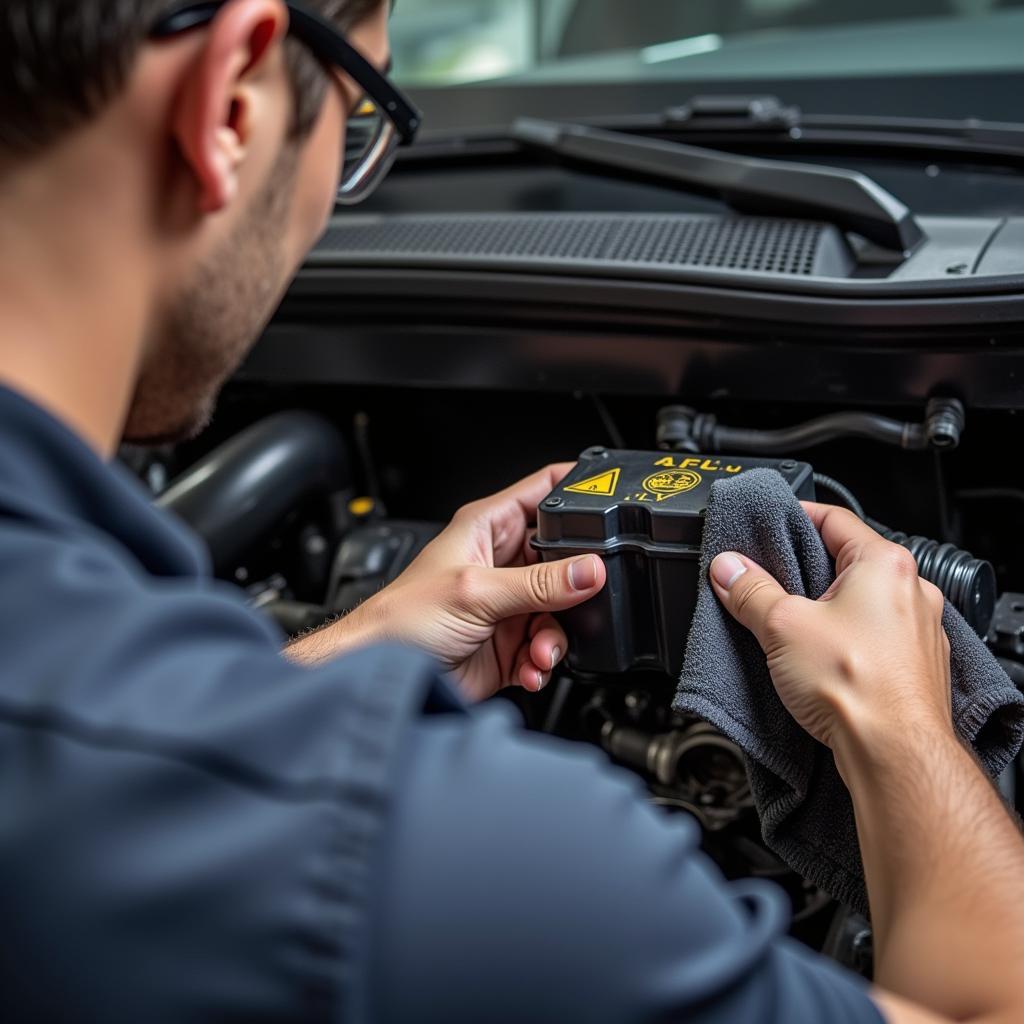 Mechanic Checking Brake Fluid in a Car
Mechanic Checking Brake Fluid in a Car
- Inspect Your Brake Pads: If you’re comfortable with basic car maintenance, you can visually inspect your brake pads. Look through the spokes of your wheels for the brake caliper and pads. If the pad material is less than ¼ inch thick, it’s time for a replacement.
- Consult a Qualified Mechanic: Unless you have experience working on brakes, it’s always best to consult a qualified mechanic for diagnosis and repair. They have the tools and expertise to accurately diagnose the problem and ensure your brakes are in optimal condition.
How Much Does it Cost to Fix a Mini Brake Pads Warning?
The cost of addressing a mini brake pad warning can vary significantly depending on the underlying cause and your vehicle’s make and model. Here’s a general idea:
- Brake Pad Replacement: Expect to pay between $150 to $350 per axle for brake pad replacement, including parts and labor.
- Brake Rotor Resurfacing or Replacement: If your rotors are damaged or worn beyond a certain limit, they may need to be resurfaced or replaced, costing an additional $100 to $300 per axle.
- Other Brake System Repairs: Repairing brake lines, calipers, or other components can cost anywhere from $100 to over $1,000, depending on the extent of the damage.
Remember, addressing brake issues promptly is crucial for your safety and can save you money in the long run by preventing further damage.
Mini Brake Pads Warning: Frequently Asked Questions
Q: Can I still drive my car with the mini brake pads warning light on?
A: While you technically can still drive a short distance, it’s highly discouraged. Driving with worn brake pads significantly reduces your stopping power and can lead to dangerous situations.
Q: How often should I replace my brake pads?
A: Brake pad lifespan varies greatly depending on driving habits, vehicle type, and pad material. As a general rule of thumb, it’s a good idea to have your brakes inspected every 12,000 miles or 12 months, whichever comes first.
Q: What’s the difference between a mini brake pad warning and a regular brake warning light?
A: Many cars have two brake warning lights. The mini brake pad warning typically indicates worn pads, while the regular brake warning light (often red) indicates a more serious issue, such as low brake fluid or a system malfunction.
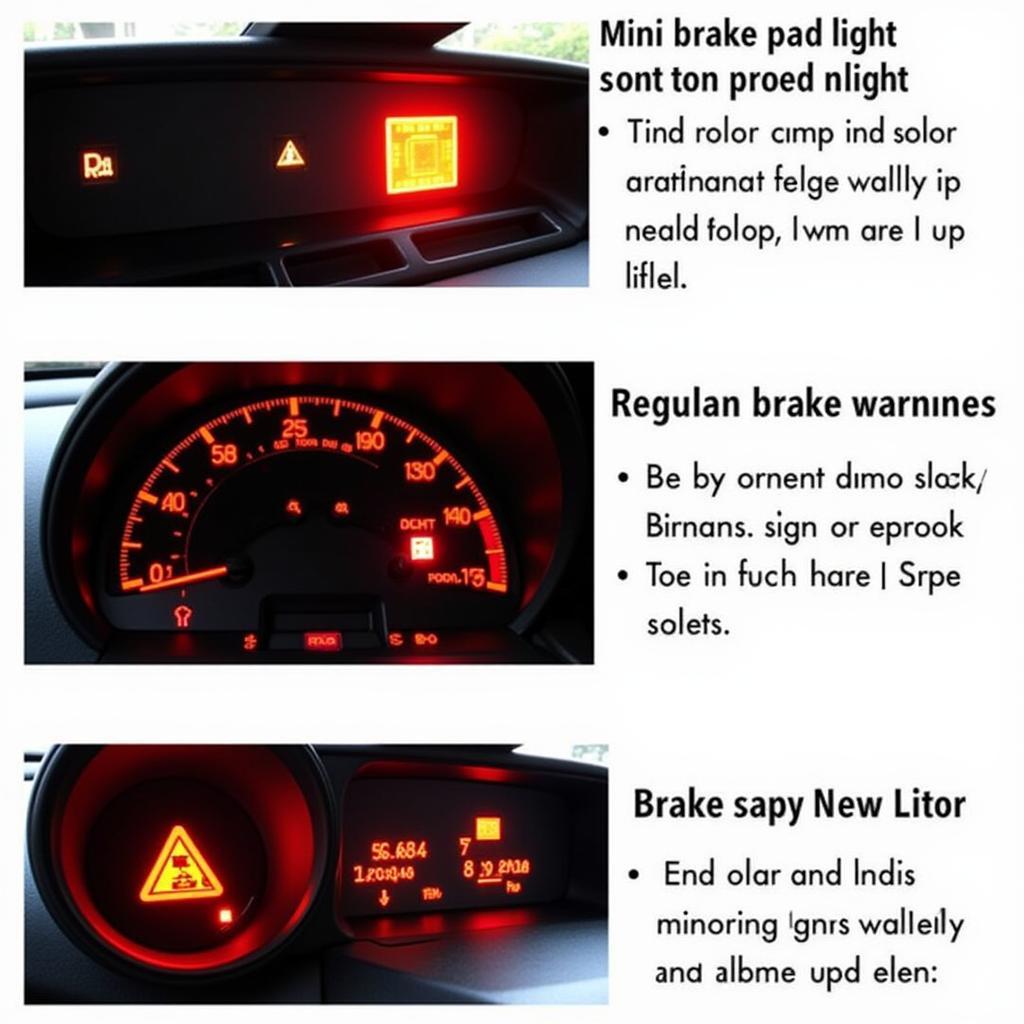 Dashboard Warning Lights for Brakes Explained
Dashboard Warning Lights for Brakes Explained
Q: Can I replace my brake pads myself?
A: While it’s technically possible, replacing brake pads requires specialized tools and knowledge. If you’re not comfortable working on your car’s braking system, it’s always best to leave it to the professionals.
Q: How can I make my brake pads last longer?
A: Driving smoothly, anticipating stops, and avoiding harsh braking can significantly extend the life of your brake pads.
Q: Is it normal for my brakes to squeak occasionally?
A: Occasional brake squeaks can be normal, especially in humid or wet conditions. However, persistent squeaking or grinding noises usually indicate a problem that needs attention.
Conclusion
A mini brake pad warning might seem like a minor inconvenience, but it’s a crucial signal from your car that shouldn’t be ignored. By understanding the warning, taking proactive steps for troubleshooting, and seeking professional help when needed, you can ensure your brakes stay in top condition, providing you with safe and worry-free driving. Remember, taking care of your car’s braking system is an investment in your safety and peace of mind.

